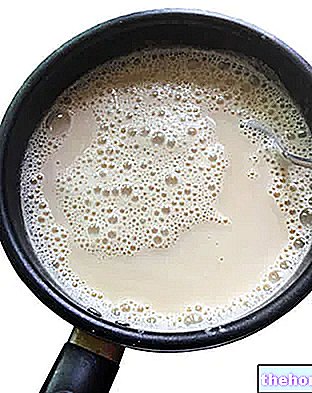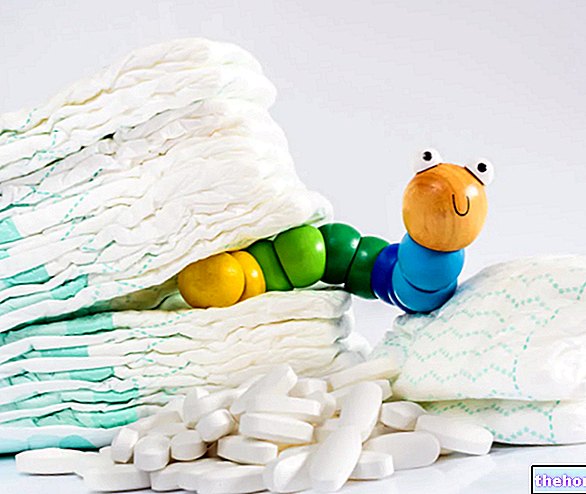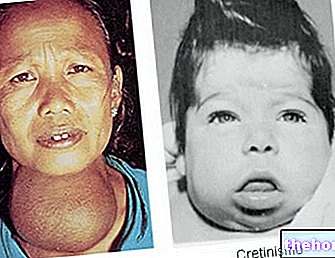«Constipation of the newborn, constipation of the child
In the previous paragraph we described the most common causes of functional constipation (a condition separated from any structural or metabolic anomaly). Consequently, the problem must be addressed by trying to remedy the causal factors listed above.
In the first few weeks of life, if the bowel movements are thinned but the stool retains its soft, creamy, water-rich consistency, no treatment is usually required, even when the baby is in pain trying to evacuate. In fact, we have seen how this suffering actually belongs to a normal growth process, during which the newborn learns a little at a time to contract only the muscles necessary to evacuate; therefore, let's give him the time to practice, without unjustified worries or curative interventions. useless if not harmful.

If true constipation (hard stools, painful and infrequent bowel movements) occurs in an infant fed formula milk, the problem can be solved by increasing the fluid intake, for example by diluting the powdered preparations in larger quantities of water. for more stubborn constipation it may be useful - after obtaining the positive opinion of the pediatrician - to add a little apple, pear, white grape or plum juice in addition to the water from the bottle.
An underlying cow's milk protein allergy may be evidenced by symptoms such as digestive problems, vomiting, hives, rectal inflammation, and difficulty breathing (wheezing); if the suspicion is well founded, a 2-4 week exclusion diet may be considered (discard the cow's milk for this time and see what happens, then reintroduce it to obtain confirmation that constipation and other ailments actually depend on this allergy).
The cornerstone of the treatment of constipation in older children is to make the evacuation no longer painful, but comfortable. For preventive purposes, it is important to make the stool softer through the generous administration of liquids and fecal "softeners"; among these the healthier and more natural is given by the dietary fiber contained in plant foods, often not pleasing to the little one. The problem can be circumvented by trying to identify the foods that your child likes, also in relation to the form in which they are presented. Fruit, for example , it can be served with a spoonful of ice cream or whipped cream, or simply "embellished" with a little imagination (cut into wedges to make a flower, a sun, a smiling face). The vegetables, on the other hand, can be minced and "hidden" in the sauce or in the filling of meatballs or tortelli. In this context, the good example set by the parents is also quite important; if mum and dad show that they appreciate vegetables, it is in fact easier for the child to love them too. Be careful, however, to avoid conflict situations and too rigid impositions at mealtimes, given that the child's constipation already involves an important psychological stress for the whole family. In addition to softening the stool, it is obviously necessary to treat any anal pathologies that make evacuation painful; in this regard, remedies against constipation are useful, which make the stool softer and more pulpy; just as important is accurate intimate hygiene and - in severe cases - topical therapy based on antibacterial, analgesic and epithelializing ointments.
In addition to feeding, it is very important to educate the child in the correct position when using the toilet. The use of the potty, for example, is much more consonant from a postural point of view than the toilet, which forces the child to an unnatural posture with his hands on the donut so as not to fall, knees together and feet dangling.If you do not have a Turkish bath and the child prefers to use the toilet because in doing so he feels "big", it is advisable to use the special reducers and a stool to be placed at the foot of the toilet together, which allows the child to keep the knees apart and the soles of the feet firmly resting on this rise (for a correct positioning it is in fact necessary that the child can rest his feet on the ground or on the stool).
Another simple measure to normalize defecation in the constipated child is the so-called "toilet training", which consists in "inviting him to evacuate to the bathroom at pre-established times of the day (late afternoon, after dinner), without making him too in a hurry. In this environment, in fact, he can enjoy the maximum degree of comfort, privacy and hygiene.
Only when all these precautions do not work, to solve the child's constipation, the pediatrician can prescribe specific aids, such as probiotic lactic ferments, fiber preparations or fecal softeners. Among the latter we remember osmotic laxatives, such as lactitol and lactulose, and polyethylene glycol. Prolonged use of stimulant laxatives (senna, aloe juice and bisacodyl) is not recommended to resolve constipation in the child; moreover, since the use of any laxative method tends to be addictive, it is important to agree with the doctor about the frequency of applications in the constipated child.




























